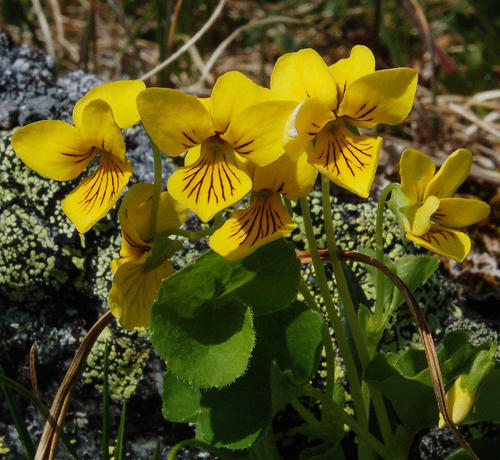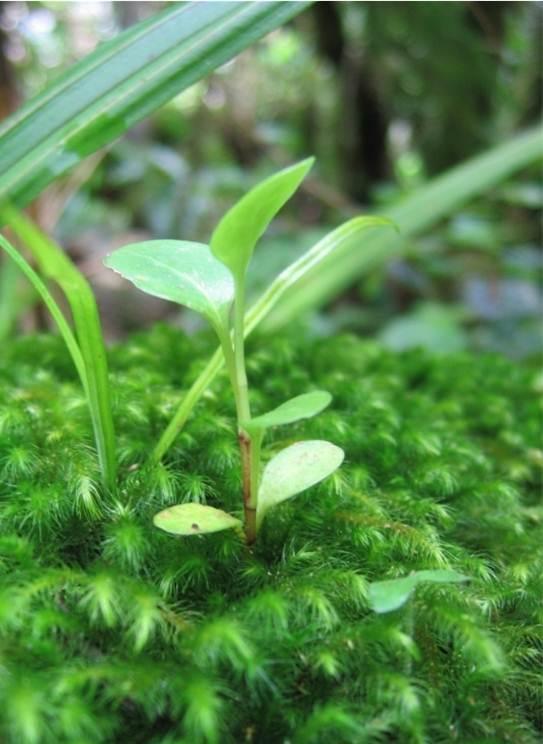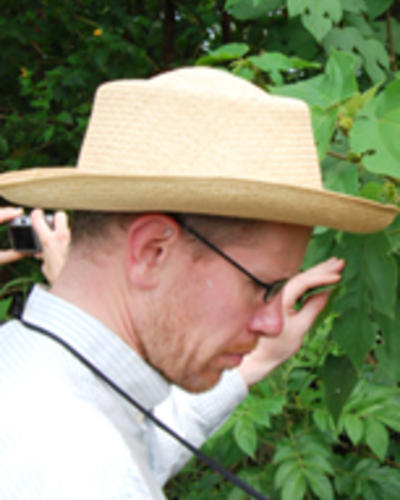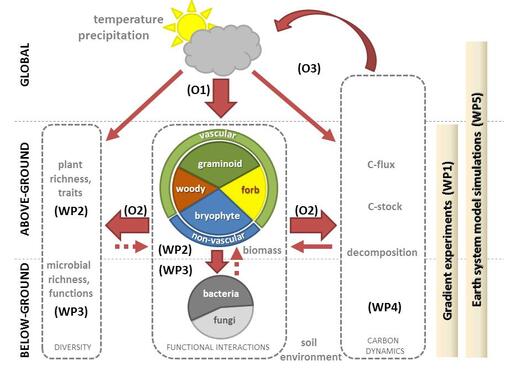Climate change and species interactions
Vigdis Vandvik, Aud Halbritter, Richard Telford
Hovedinnhold
Effects of climate, and climate change, on plants - from germination to biodiversity and ecosystem function.
Effekter av klima og klimaendringer på planter - fra frøspiring til biodiversitet og økosystemfunksjoner
Western Norway, with its strong gradients in temperature and precipitation, provides a unique "climate laboratory" that can be used to understand impacts of future climate changes on ecosystems. We have set up a 'climate grid' of 12 study sites from oceanic to continental climates and from forest to alpine ecosystems. In these sites we combine experiments and observational studies to explore how climate-change impacts vary along two major climate gradients -- temperature and precipitation -- and how these effects scale across levels of organisation from individuals via populations to communities.
A number of researchers and students have done their research in these sites, funded by SeedClim, FunCaB and other research projects. Six Master's students have already worked on the project, studying plant growth and allocation, seedling recruitment, invasive species, and nutrient availability and productivity.
We are interested in getting in touch with students who would be interested in developing a MSc project within this system relating to, for example, functional ecology, seedling survival and growth, seed predation, ecosystem carbon storage, the or other topics of their interest.
Climate and trophic interactions
- Some species lose out under a warmer climate
- This can be caused by direct climate impacts, of by indirect factors such as competition, predation, disease, etc.
- For example, the alpine plant Viola biflora is small, and it appears to have more bite marks from snails and insects when temperature rises
- Is the decline of this species with warming driven by climate stress, competition or insect predation?
Help us find out!
Klima og trofiske interaksjoner
- Noen arter taper under et varmere klima
- Dette kan skyldes både direkte klimaeffekter og indirekte faktorer som økt konkurranse, predasjon, sykdom etc.
- Fjellfiol er småvokst, og den ser ut til å få mer beiteskader fra snegler og insekter når temperaturen øker.
- Er predasjon, konkurranse, eller klima i seg selv årsaken til at planten taper terreng når det blir varmere ?
Hjelp oss å finne det ut!
Climate and biotic interactions
- Mosses thrive in a warm, damp climates, like ours in western Norway, where they play an important role in the ecosystem
- Mosses influence higher plants through direct competition and through allelopathy (chemical warfare!)
- How will the changing 'bryosphere' under a warmer and wetter climate affect biodiversity?
Klima og biotiske interaksjoner
- Moser trives godt i varmt, fuktig klima, som vårt, hvor de kan spille viktige roller i økosystemene
- Moser påvirke høyere planter gjennom direkte konkurranse og gjennom allelopati (kjemisk krigføring!)
- Hvordan vil endring i 'bryosfæren' under et varmere og våtere klima påvirke fjellets artsmangfold?





